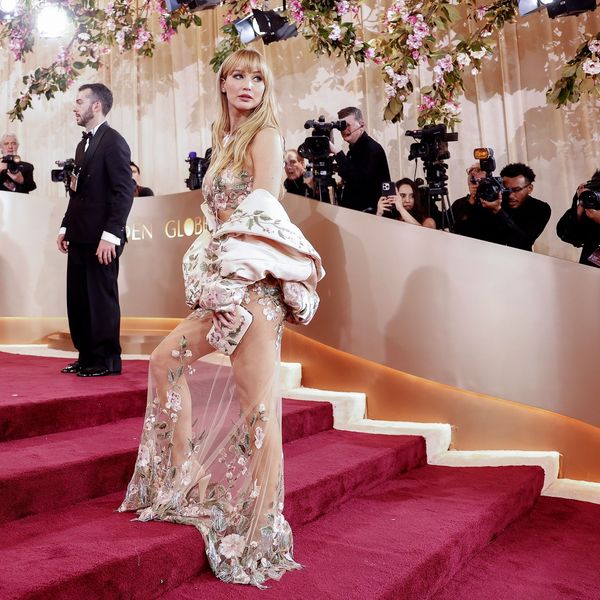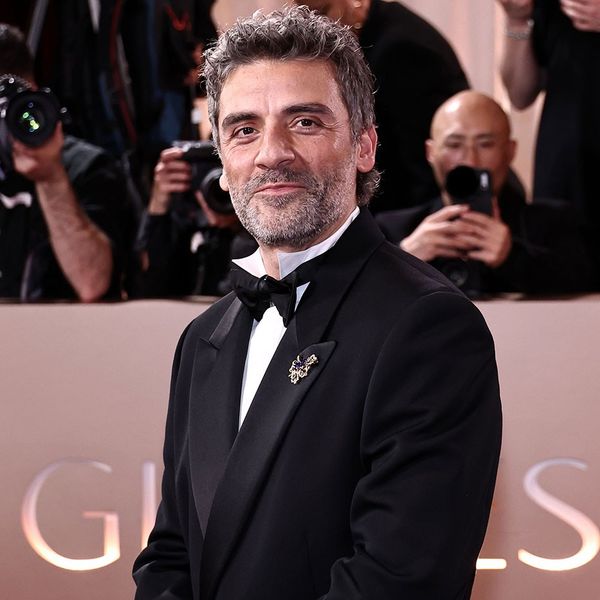The Art of the Stack
Still-life photographer duo Nocera & Ferri on bringing inanimate objects to life.
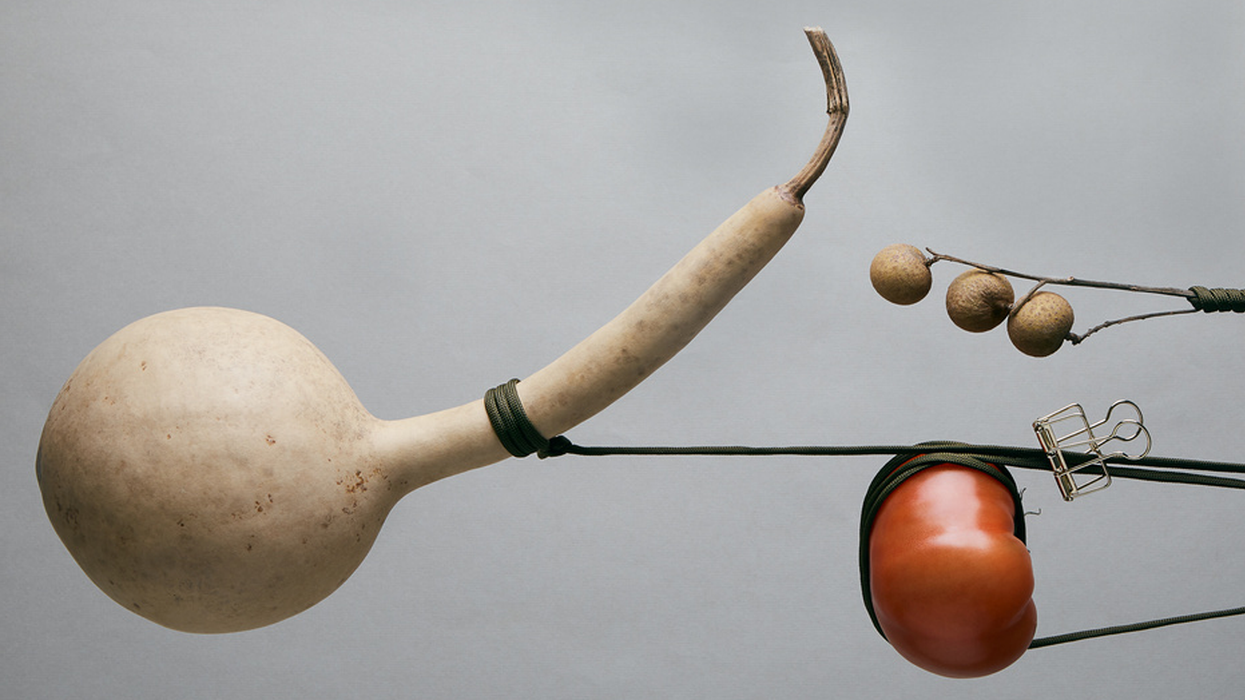
To some, a shell is but a shell; a shoe is just a shoe; a gourd is merely a gourd. But to a still-life photographer, that piece of driftwood heaped upon the dunes is, in fact, a potential set piece destined to rest precariously against a crusty loaf of bread in their next fine art project. For creative duo Luca Nocera and Lara Ferri, anything can be a prop—even 18th-century surgical tools.
“They were beautiful objects, but some people thought they were quite creepy,” Luca shrugs, referring to a recent Facebook Marketplace find. The oddity of the items spoke to them, so naturally, the duo decided to turn them into an obstacle course of geometry for a photograph. They now have accumulated their own cabinet of curiosities (read: shed in the backyard), with oddities ranging from sculptures to seashells. “Our friends and family now know, so every time they come across something funny, they say, ‘Oh, do you want to use this as a prop?’” laughs Lara.
Like most creatives, they’re control freaks. The world of still-life photography cuts out extraneous parties, especially since their title of creative duo encompasses all aspects of production. There’s no model, no stylist, no producer to dilute the purity of their ideas. “We found that still life is the right way for us to express our style, our vision, and who we are,” Lara says.
Ahead, Lara and Luca take us through their backstory, explain their diverse sources of inspiration, and answer rapid-fire personal questions.
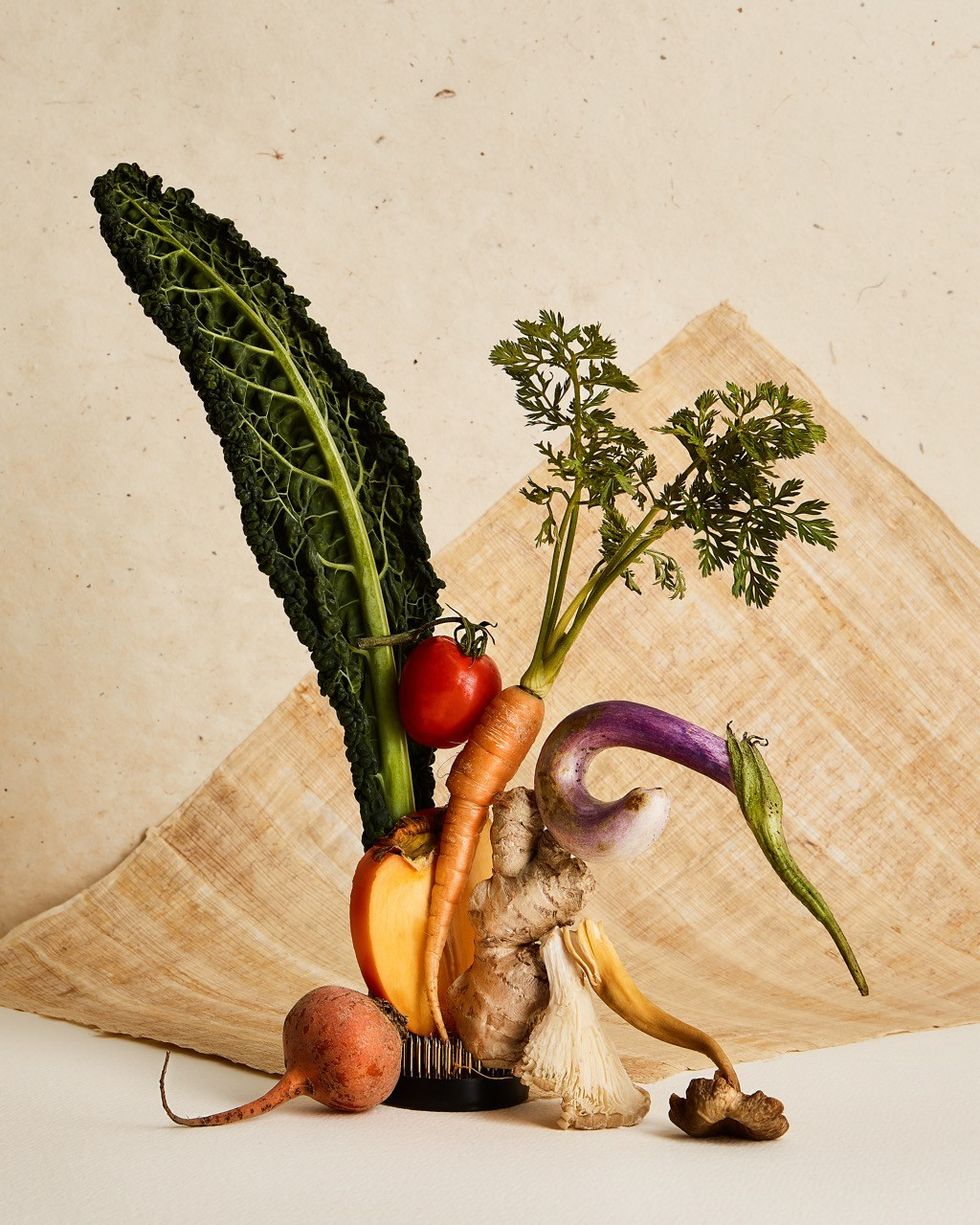
Courtesy of Nocera & Ferri
Could you start by telling me how you got into this business, what your career trajectory looked like, and how it led you here?
Lara Ferri: “We are both Italian. We studied at art school separately, and then we came across each other years later after moving to Milan where we studied photography. We joined our life and career together about 16 years ago. We're both photographers, but in the past three years, we’ve become more of a creative duo. We're not just taking pictures, but when we get the chance, we're in charge of the whole creative direction—having our hands on set as a set designer and a prop stylist.”
Luca Nocera: “We started working in fashion in Italy and then when we moved to London 11 years ago. Then we realized that we were more into the still-life world because we could control every aspect of the shoot. We could control the setting, the design, and the style. It was easier for us to deliver our vision.”
When you were younger and first getting interested in imagery, what were some early photography, art, architecture, or sculpture obsessions that led you down these paths?
LN: “We are not super old, but we're not that young. So when we started to study and to work as assistants, it was still film. Digital was just coming up. It seems like 2000 years ago, but it was probably just 20 years ago. It was a completely different world. I was inspired by big-name fashion photographers, like Richard [Avedon] and David [Bailey], all those guys. When I was 16, I thought, ‘One day I'm going to be a successful fashion photographer’—just thinking about those fashion perks. But then, it didn't happen like I was imagining when I was 16.”
LF: “We both studied at the same art school, but he's older than me. We both have a degree in graphic design. So, I've always been inspired by geometry and architecture. I love clean imagery and minimalism, which I’ve realized now since moving to London. Italian and English art is so different. Since I moved here, I have learned different ways to express myself, and I've been in contact with different art inspirations. In terms of photographers, I love Irving Penn. He was a fashion photographer, but to me, he was also shooting still life. I see him quite a lot in my work.”
LN: “Since we both studied in film, it makes our work more clean and straightforward. We don't spend so much time in post-production; we would prefer to have everything ready before shooting, which just means that our approach is less on the computer and is more with our hands on set.”
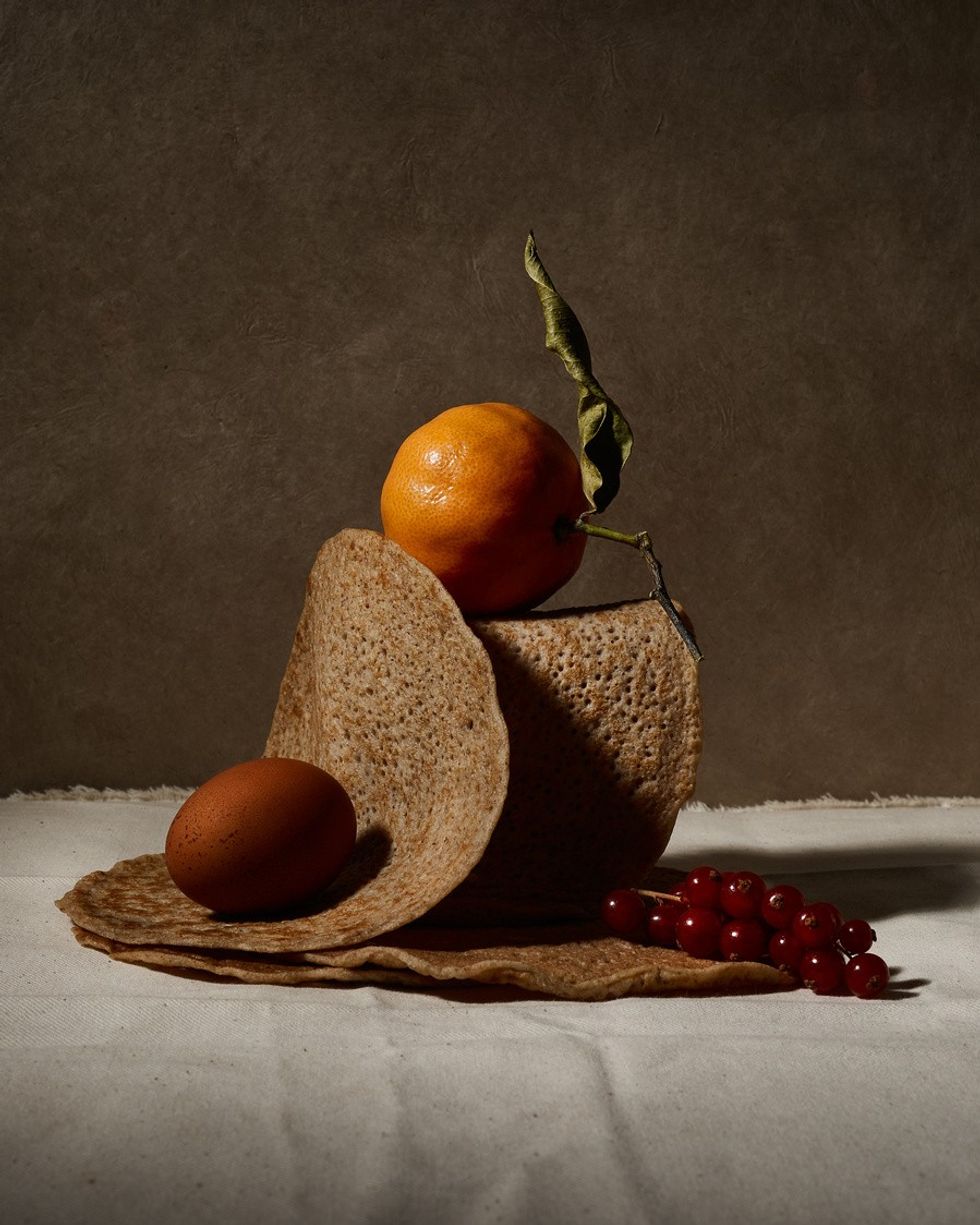
Courtesy of Nocera & Ferri
So a client gives you an object that they want you to shoot, what does your process look like when you're then building this world? Where are you looking for inspiration? What elements are you considering? How do you map that out?
LN: “We love to work with natural elements. Most of our props we scout ourselves, walking on a beach or in the woods. We gather all these stones and pieces of wood. We love to work with those elements and to give our imagery a balance and a natural aspect to the final piece. Most of the time, clients come up with a brief; few give us total freedom. And that, for us of course, is the best because we can do what we want and we can express ourselves to the maximum. But regardless, we try to deliver our vision but to satisfy the client, as well.”
LF: ”You can see through our jobs that composition and color are very important for us. Every time we choose a color, there's always a reason, a connection with the composition or with the product.”
Do you ever collect props or do you source them per shoot?
LN: “We have a shed in the garden full of props. We like creating, so we started taking pottery classes to make things on our own.”
What about the image itself? What are you hoping to get out of the final image, and how does the goal shift when you're not working with a client?
LN: “Usually, we work with an object. There's always a product that someone wants to sell, but we always introduce something else. So if we’re given a pair of shoes, we try to put these shoes in our world. Even if you have to, I don't know, put the shoes on a rock with some leaves or any props that we love to use. When we don’t have to deliver for a commercial project, we use any props we find to express ourselves in more of a fine-art sense. It is not about selling something but making something that satisfies ourselves. And then if someone else appreciates it, that is the goal.”
LF: “We like to create an emotion. We want to make the person feel a vibe or a sensation by bringing art to nature. It is quite important for us to bring the person into our world.”
LN: “To give you an example, there's a recent project we worked on with old tools—hammer, pliers, all these old tools that we've been given by this old lady that lives nearby. She was getting rid of her dad’s old tools and put an advertisement on a Facebook group. We didn't want them to go to the landfill; we wanted to make something out of them. So we made this art project, and a magazine loved it. Those projects give me more satisfaction than doing a campaign, even if it was a no-budget project. It was just something to express ourselves.”
LF: “Even when we do composition, everything has a reason and a purpose. We don't just source random things.”

Courtesy of Nocera & Ferri
Walk me through your process with the tools specifically. Where does your mind go when you're starting to create this image set?
LN: First, we were amazed by those tools from past centuries. Everything was made to last, everything was made of proper wood and metal. You can see that they were meant to be used for a lifetime or even more. We always want to put the things that we use in balance. We try to add some geometrical aspects to objects or natural things. Our first idea was to make this geometric shape and then give the viewer this connection straight away with the past and with the object itself.”
LF: “With the beauty of the object. We normally start with the idea, and then we take some references and make a moodboard. From there, we determine the mood and the vibe that we want to communicate through the images. We also talk about lighting, composition, and colors. Because we have lots of backgrounds and props here, it's quite easy for us to go through a big selection of things that we can use to make the set.”
From looking at your photos, it seems like you have some quite precarious stacks going on in some photos. Tell me about the art of making that work for you.
LN: “Clients always ask, ‘Can you move this over there?’ No.”
LF: “We don't really like to put so many fake things around or touch up much in Photoshop. We may use some sort of support or a fishing wire, but I would say 90% of the images are exactly how you see them.
LN: “They have to balance on their own, which is why most of them are very precarious.”
LF: “But it's part of our vision. We do this on purpose because it's so fascinating to see how the object and texture react together. The sets fascinate me.”
LN: “Also, you realize straight away if items are actually in balance instead of being computed in Photoshop. Even if you can do the best Photoshop work, you can tell what’s organic by how the item reacts. Well, I guess I can tell.”
LF: “I think when something is beautiful and natural you can see straight away without any explanation.”
LN: “And most of the time, the way items naturally sit together is the way they look best instead of forcing something that doesn't want to stay there.”
What's the oddest thing you've ever used as a prop?
LF: “Well, liquid is definitely not easy to control. It's unpredictable how it will react.”
LN: “In terms of weirdness, we used surgical tools from the 18th or 19th century. They were beautiful objects, but some people thought they were quite creepy.”
LF: “Scary gynecological stuff.”
LN: “Looks like Jack the Ripper. Definitely weird. In some of our images, there are some items that look like balloons. They're actually like plastic balloons—clay and bubbles. It is this toy that we used to have in Italy when we were kids called Crystal Ball from the '80s. It got a lot of interest from people.”

Courtesy of Nocera & Ferri
I know this is always a really hard question, but I love hearing people think through it. If you had to describe the style of your photographs, how would you do that?
LF: “Art is the main inspiration. When I do research for myself or for my work, I always go through different mediums from sculpture to painting—I can be inspired by anything. I would definitely say nature, our surroundings, and art are my main sources.”
LN: “If someone else describes our work as fine-art photography, I would be happy with that. Even though most of our work is commercial photography, the approach is creating fine art and then let's try to sell some stuff, as well.”
It's funny to use the phrase “still life” because the average person probably thinks of an old painting with a bowl of fruit in it. How do you make still life modern? What makes a still life feel modern to you guys?
LF: “I would definitely say lighting and new objects. ‘Still life’ makes me think about the Renaissance. One of our first images that we took ages and ages ago began with a Renaissance painting as inspiration. But even then, we introduced some weirdo object. It’s still fine art but something more. It's always taking a little detail to shift your attention.”
LN: “If you’re thinking about Renaissance paintings, making them modern in terms of photography, I would say, is about taking stuff out. I am always taking stuff away from the set to have a more minimal approach. I prefer pictures with less elements in them. I find it more relaxing and peaceful. I love it, even in interior design. I love Japanese traditional houses to give you an idea—an empty room with three elements. This is what I like to see in the picture.. I don't like when there's like 2000 elements.”
LF: “He's really minimal. We balance each other. Since we've become a duo, I’ve actually started to be more minimal, and actually, now I do prefer this taste that we have together. We have the same interests, so we pretty much like the same style—Scandinavian, Japanese, very clean and minimal.
What have you been the most proud of that you've done so far?
LF: We’ve started working on an Ikebana project. We liked the elements in ikebana compositions. We had a kitchen full of vegetables and fruit, and so we said, ‘Okay, when we finish the job, let's do something more creative instead.’ Because we were already doing ikebana with flowers, it came very naturally for me to make ikebana out of something different. Then, we made ikebana out of all sorts of objects.”
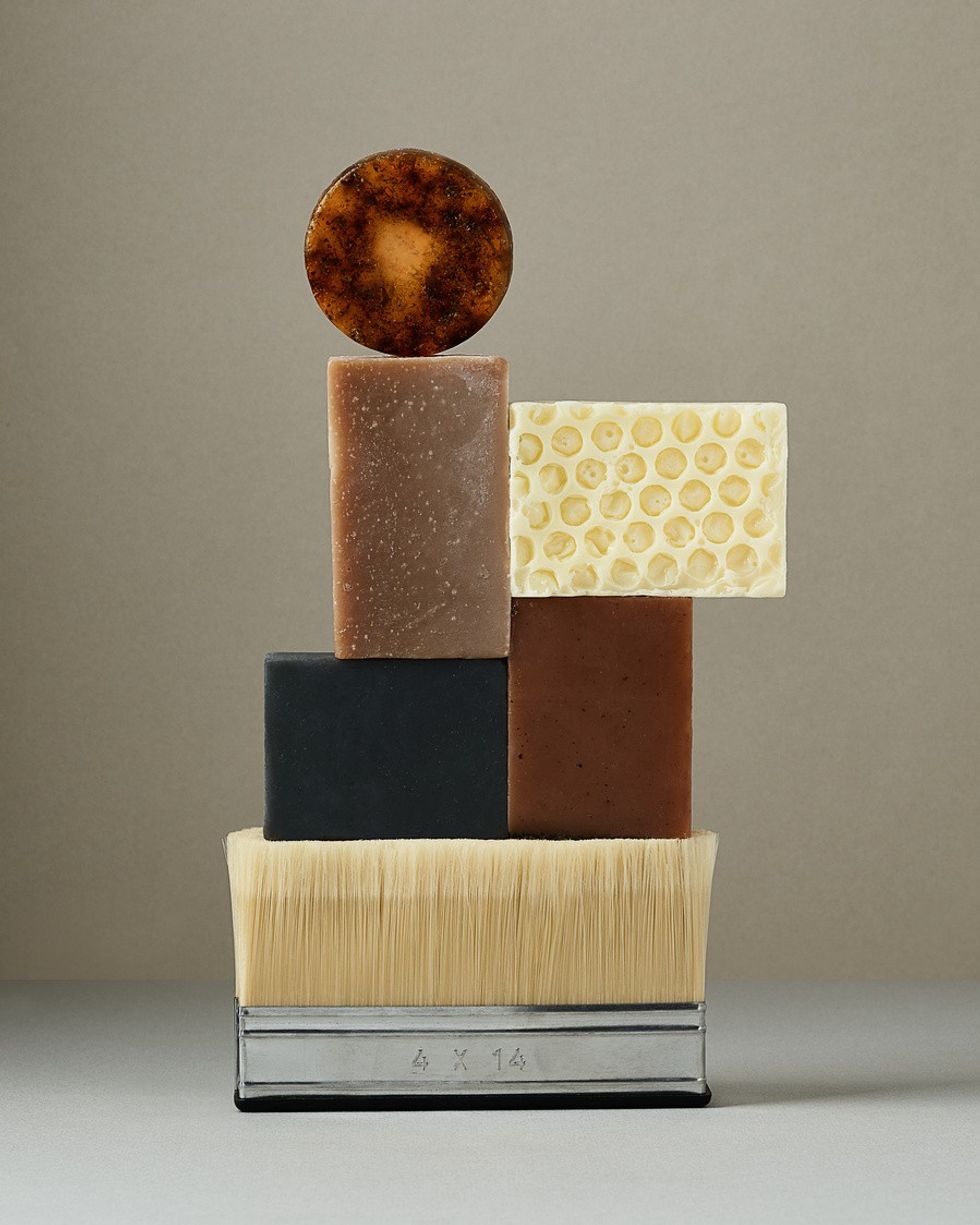
Courtesy of Nocera & Ferri
Rapid Fire Questions:
What’s your guilty pleasure?
LN & LF: “PIZZA!”
Hidden talent?
LN: “Sourdough fried pizza.”
LF: “Ceramics.”
Irrational fear?
LN: “Needles.”
LF: “Insects.”
Something you used to hate but you love now?
LN: “Gorgonzola cheese.”
LF: “Pumpkin.”
In a biopic about your life, who would play you?
LN: “Adrien Brody.”
LF: “Debra Messing.”
Top 5 most-used emojis?
LN: 😂 😍 ❤️ 😎 ⭐
LF: 😂 😍 ❤️
Best piece of advice you’ve ever received?
LN: “Never sell yourself short.”
LF: “Listen to yourself.”
The collected works of Nocera & Ferri are represented by Trunk Archive.


